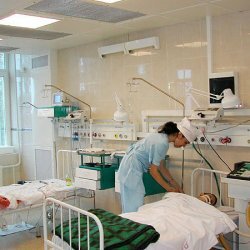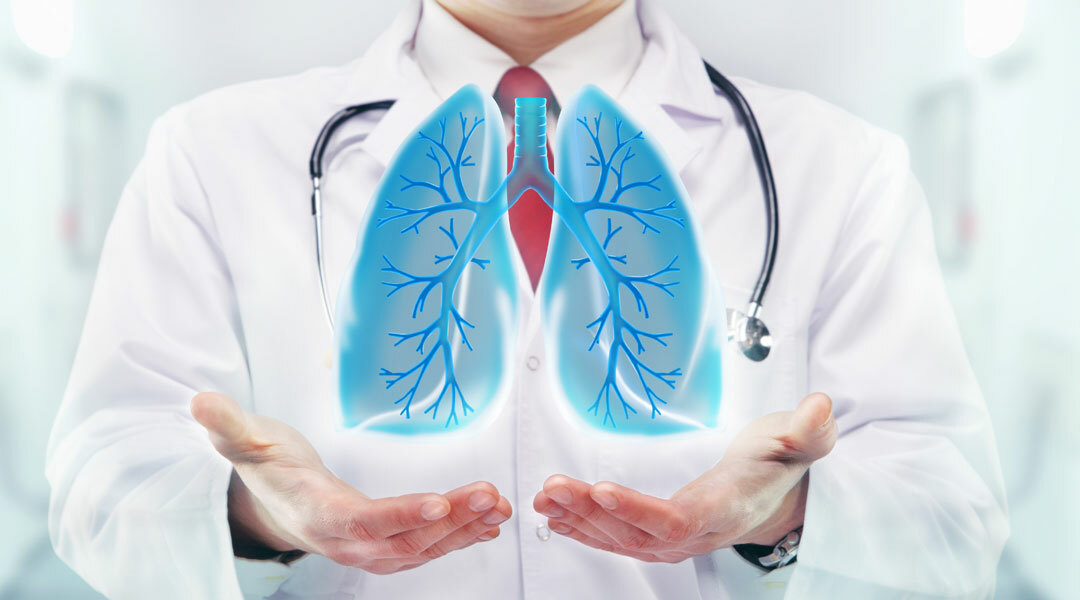Hepatic-pulmonary syndrome or HPS

Pathogenesis of the disease
The proven mechanism is a violation of the balance between pulmonary vasoconstrictors and vasodilators. As a result of portal hypertension, which is characteristic of cirrhosis of the liver, portopulmonary and portocaval shunts are formed. The formed discharge leads to the entry into the pulmonary bloodstream of substances that must be rendered harmless in the liver.
The main pathogenesis is the expansion of pulmonary capillaries. Increased production of powerful vasodilators, especially nitric oxide, provokes a decrease in arteriolar tone, angiogenesis, vascular remodeling, arteriovenous shunting. The mechanism of increased production of nitric oxide is not fully understood, however the high concentration of this vasodilator is proved by its detection in the exhaled air. The index is normalized after liver transplantation.
Another theory of pathogenesis is the high production of endothelin-1 and endotoxinemia. The barrier function of the liver as a result of portosystemic shunting is violated. Venous congestion in the intestine increases the permeability of the wall. In the portal vein, microorganisms, their substances( endotoxins) come in large quantities. Endotoxins stimulate the production of vasoactive substances, which leads to an imbalance of mediators responsible for the narrowing and widening of the vessels. Macrophages of the lungs and liver in endotoxinemia produce endothelin-1 and nitric oxide. The vasodilating effect of NO is enhanced in the presence of endothelin. Vessel receptors become less sensitive to vasoconstrictors.
Intrapulmonary vessels extend mainly in the lower parts of the lungs. The perfusion-diffusion ratio is violated: the oxygen molecule does not enter the center of capillary blood flow during capillary expansion and does not oxygenate hemoglobin.
Types of hepatopulmonary syndrome depending on changes in the vascular bed:
- 1 type: minimal changes - vasodilation at the level of precapillaries, inhalation of 100% oxygen improves oxygenation parameters.
- 2 type: changes expressed - arteriovenous shunts, 100% oxygen inhalation does not change the oxygenation indices.
Clinical picture
- Dyspnea is the main symptom that allows one to suspect a syndrome. Can occur suddenly with physical exertion. Characteristic of the platypnea is the appearance of dyspnea in the transition from a prone position to a vertical one. Strengthening hypoxemia in an upright position - ortodeoxy( a highly specific symptom of hepatic-pulmonary syndrome).Improvement in the horizontal position is associated with increased blood flow at the base of the lungs under gravity. Cough is a rare symptom.
- The presence on the skin of the trunk of "vascular asterisks" is a manifestation of systemic vasodilation.
- "Spider-like" hemangioma.
- Distal phalanges of the fingers in the form of "watch glasses" and "drum sticks".
- Peripheral cyanosis.
In the presence of respiratory symptoms, it is necessary to exclude other causes, for example, pulmonary fibrosis and COPD, which occur in a third of patients with FL.
Diagnosis of hepatic-pulmonary syndrome
To demonstrate the syndrome requires the presence of portal hypertension, liver disease, intrapulmonary vasodilation and arterial hypoxemia.
The level of oxygenation of the blood is assessed by pulse oximetry and by the study of the gas composition of the blood. During the change in body position, the partial pressure of oxygen decreases by more than 3-10 mm Hg. Art.(Orthodeoxy), after 100% of oxygen the parameters change( PaO2 increases sharply).
The "golden standard" of confirmation of vasodilation is transthoracic contrasting two-dimensional echocardiography. The solution used as a contrast agent, when administered intravenously, forms bubbles that are visible in the right heart. Use physiological solution, shaken by hand. Normally, the left divisions do not enter the vesicles, since their diameter is greater than the intrapulmonary capillaries. With expanded intrapulmonary capillaries, the presence of shunts, vesicles appear in the left divisions. Confirmation of intracardiac bypass is the detection of contrast medium in the left heart for 3 heartbeats after intravenous injection. The appearance of a 4-6 reduction is a sign of intrapulmonary shunting in hepatopulmonary syndrome.
Contrast transesophageal echocardiography is more sensitive, as the vesicles are found in the upper pulmonary veins. Contraindication to the method is the dilatation of the esophagus.
A highly specific but less sensitive diagnostic method is radioisotope scanning using micro-aggregated albumin. Labeled albumin particles do not penetrate through the lungs due to their small size. With intrapulmonary vasodilation, particles( 60%) penetrate through the lungs, accumulate in the kidneys, brain, thyroid, spleen. This method helps to assess the degree of shunting.
Pulmonary angiography is an invasive but ineffective way to detect intrapulmonary vasodilation. Indications for use - severe hypoxemia, a weak response to 100% oxygen. They are also used for selective embolization of arteriovenous shunts.
Computed tomography of the chest( high resolution) can reveal the expansion of the intrapulmonary vessels.
Treatment of hepatopulmonary syndrome
There is no pathogenetic treatment. Symptomatic therapy is, as a rule, not sufficiently effective. At the heart of the treatment is the therapy of the underlying disease, the mechanical closure of the dilated vessels, the use of antagonists of the vasodilators. To suppress the production of nitric oxide, intravenous injection of methylene blue leads, the condition of the patients improves, but the effect persists for a short time. There is evidence of a positive effect of paroxetine antidepressant. Embolization is difficult because of the size and number of lesions.
Reducing shunting and improving oxygenation with drugs( norfloxacin, indomethacin, octreotide), plasmapheresis is ineffective.
The only conservative method of treatment, temporarily relieving the condition of patients, to date is oxygen therapy.
A liver transplantation remains a radical and effective method of treatment. In the lists waiting for transplantation, patients with the syndrome have priority.
Prognosis and course of the disease
Complication of liver cirrhosis in the form of hepatic-pulmonary syndrome reduces life expectancy. The cause of death is the complications of liver failure, portal hypertension. Mortality after liver transplantation with a PLC is higher than without it. The prognosis after transplantation is determined by the presence of hepatopulmonary syndrome.
Without liver transplantation, the prognosis is unfavorable. Survival is less than 2 years.



